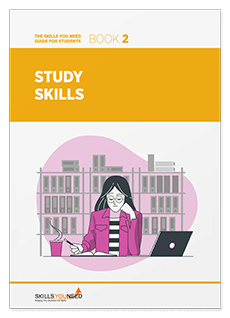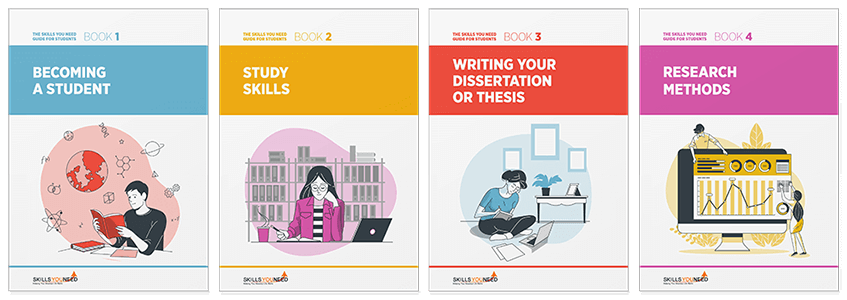How to Pass a Multiple-Choice Exam
See also: Top Exam Preparation TipsFrom written driver’s tests to university exams, multiple-choice exams are a common form of testing that you will likely have to complete at some point in your life.
While the format is quite simple, these exams can be deceivingly hard to take because you don’t have any space to explain your understanding or get partial points— if you choose the wrong answer, it’s just wrong!
Luckily, there are ways to prepare for multiple-choice exams that will make test day less nerve-wracking and increase your likelihood of scoring higher.

What is a Multiple-Choice Exam?
Multiple-choice is a test format in which you will be presented with a question and approximately 3 to 6 possible answers to choose from. You will then be asked to either circle the correct answer or fill it in on a bubble sheet.
If you are taking online high school courses or university courses, you may be taking your exams online. In this case, make sure you are aware of the protocol for taking the test virtually. Some schools will have a proctor watching you complete the exam through your webcam to avoid cheating. Others may require you to answer each question before continuing on to the next. These are important things to be aware of before test day.
Preparing for the Exam
As with any exam, you should know what the exam will cover so you know where to focus your studying. When reviewing your notes, don’t fall into the assumption that you will be able to find keywords in the answers to spark your memory. While multiple-choice tests don’t require you to present any information in your own words, the questions are often more detailed than essay-style tests. Additionally, they will often test your ability to apply your understanding.
Review previous tests to see where you went wrong and learn from those mistakes. Some instructors will also provide students with exams from previous years to use as a study tool.
If your course has a textbook, see if there are any practice questions throughout or at the end of chapters and use those. There should always be an answer key at the back of the book so you can check your answers and make sure that you are on track.
Creating your own practice questions based on class readings and notes can help you look at the information differently. Focus on key concepts from each chapter and try to phrase the questions in a similar way to how your instructor would write them. If you have a friend taking the course with you, write questions on your own then swap them.
Watch for Wording
It is really important to take your time when reading through each question on a multiple-choice exam because not every question will be asking you might assume it is.
Sometimes, questions will ask you to choose the “most correct” answer meaning none of the answers are actually entirely accurate, but that one is more accurate than the rest.
Other times, you may be asked to select all answers that apply or choose which answer is incorrect.
Try circling or highlighting key words in the question that could easily confuse or distract you, such as “not,” “unless,” “never,” and “always.” Be aware of double negatives and multiple statements.
Answer the Question First
Before you look at the answer options, try to answer the question first in your own words so you have an idea of what to look for in the options. Once you have come up with an answer, you can then read the options and find the answer that best matches what you came up with.
Even if the first option is the answer you were looking for, make sure you read through the remaining options to make sure you are choosing the best answer.
Process of Elimination
When reading through the answer options, get rid of any answers you know are definitely wrong. Hopefully, this will leave you with one option left that will be the correct answer, but it will more likely leave you choosing between two options.
Once you’ve narrowed down the options, re-read the question and compare the remaining options.
Suppose you are unable to choose between the two. In that case, it’s possible that you eliminated the correct answer so, go back and double-check your eliminated options to ensure you didn’t miss anything.
When in doubt, guess, but only if you are not penalized for wrong answers. Otherwise, leave the question blank and move on.
Time Management
Multiple-choice exams often have many questions, each with a low weight. If your instructor tells you beforehand how many questions will be on the test, take that number and divide it by the amount of time you have to complete the exam to know how much time you should be spending answering each question. You should always leave enough time at the end of the exam to go back and check your answers and ensure that you answered all the questions.
Some people like to answer each question before moving on to the next; however, it is ultimately more time-effective to go through the exam and answer all the questions you find easy first, then go back and spend extra time on the more challenging questions.
Reviewing
Don’t spend too much time when reviewing your exam after completing all the questions. Only change your answer if you’re positive you answered incorrectly.
If you are recording your answers on a bubble sheet, review the sheet to make sure you didn’t miss filling in any bubbles and that you fill in the bubbles entirely so the scantron doesn’t miss them. Also, ensure that you erase any unwanted marks thoroughly.
Often, students will assume that because they answered, for example, “B” for question 13 that the answer to question 14 can’t also be “B.” In reality, the questions are often randomly ordered, meaning there is no rhyme or reason to the order of answers. Don’t bother looking for patterns because they are likely not there.
Further Reading from Skills You Need
The Skills You Need Guide for Students

Develop the skills you need to make the most of your time as a student.
Our eBooks are ideal for students at all stages of education, school, college and university. They are full of easy-to-follow practical information that will help you to learn more effectively and get better grades.
About the Author
Matt Reed lives in Toronto, Canada. He is a freelance writer and editor, tech geek, and stay at home father.


